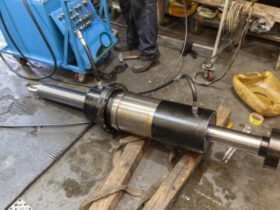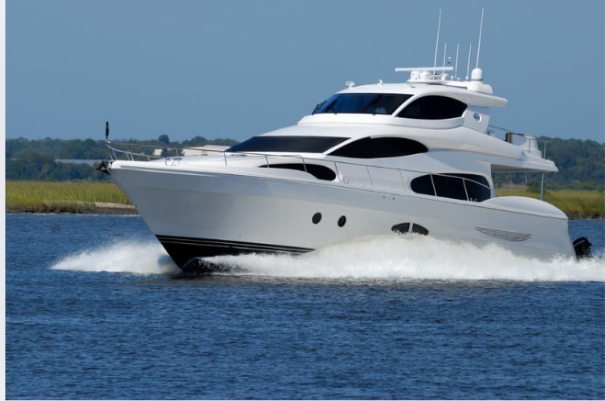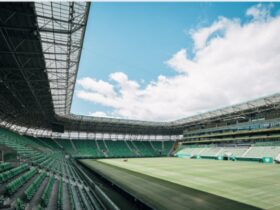Overview of the Incident
On a calm, sunny afternoon, an $8 million yacht tragically capsized near Annapolis, Maryland. This stunning incident has raised many questions about the safety of luxury yachts, the role of the crew, and what measures can be taken to avoid such catastrophic events. The yacht, a high-end vessel designed for comfort and luxury, was not just a boat—it was a floating palace. However, in a blink, it became a headline across the country, leading people to wonder how something so expensive and advanced could end up capsizing.
The Yacht and Its Specifications
This yacht, valued at $8 million, was one of the finest examples of modern maritime engineering. Measuring 75 feet in length, it featured cutting-edge technology, a high-end interior, and powerful engines capable of reaching speeds of up to 35 knots. With luxurious cabins, a fully equipped kitchen, and a rooftop deck for entertaining, it was designed to provide an unmatched experience on the water. But despite these features, it proved that no vessel—no matter how expensive—can escape the unpredictable forces of nature.
Why Was the Yacht So Expensive?
The high cost of this yacht wasn’t just about its size. It was also about the craftsmanship, design, and technology that went into its creation. The hull was made from high-grade composite materials, ensuring both speed and durability. Inside, the decor was meticulously crafted with exotic woods, leather upholstery, and state-of-the-art electronics. The yacht was also equipped with an advanced navigation system, radar, and satellite communications—everything a person could need for an extended journey. But even with all this luxury, nothing could prevent the capsizing.
See Also Read: The Ultimate Gomyfinance.com Create Budget 2024
The Events Leading to the Capsizing
On the day of the incident, the yacht set sail from Annapolis, heading out towards open waters. Weather conditions were reported to be calm initially, with clear skies and mild winds. However, shortly after the yacht left the harbor, an unexpected squall hit the area, causing the waves to rise significantly. The yacht, which had been cruising at high speed, was caught off guard by the sudden storm. Despite the captain’s quick efforts to adjust the course, the force of the waves overwhelmed the vessel, causing it to list heavily before capsizing.
Weather Conditions on the Day
The weather on the day of the capsizing played a crucial role in the incident. While the morning started off clear, conditions worsened rapidly as a low-pressure system approached the area. The storm brought with it strong winds and sudden gusts, which led to choppy seas. According to meteorologists, the yacht was likely not prepared for the swift changes in weather. Even though the vessel was built to handle tough conditions, the combination of speed, angle, and sudden weather shifts proved to be a dangerous mix.
Did Crew Negligence Play a Role?
While weather was a major factor, there are questions about whether crew negligence contributed to the tragedy. Some experts have pointed to the yacht’s speed at the time of the storm, suggesting that the captain may have been too eager to push the limits of the vessel. Investigations are still ongoing, but it’s clear that the incident highlights the need for more training and better decision-making in high-stress situations. It’s easy to assume that a luxury yacht, with its advanced features, would always be in control—but sometimes, human judgment plays a significant role.
Rescue and Recovery Operations
Following the capsizing, rescue operations were swiftly initiated. The Annapolis Fire Department, along with the U.S. Coast Guard, responded to the emergency call. Within hours, all passengers were rescued, though some sustained injuries. Thankfully, no fatalities were reported, which is a small miracle given the severity of the incident. The recovery of the yacht took several days, involving specialized equipment to lift the vessel and assess the damage. The yacht was later towed back to shore, where it would be evaluated for future repairs and investigation.
Who Was Onboard the Yacht?
The yacht had a total of 10 people onboard at the time of the capsizing, including the captain, crew members, and several guests. All passengers were fortunate enough to make it out alive, though some sustained minor injuries during the chaotic moments before they were rescued. The identity of the passengers has not been fully disclosed, but sources report that the yacht was being used for a luxury getaway, with high-profile individuals among the guests.
Impact on the Local Community
The capsizing of such a high-profile yacht had a ripple effect on the Annapolis community, known for its maritime history. Local businesses, particularly those in the boating industry, expressed concerns about the impact this incident could have on tourism and boating culture. Annapolis, being one of the largest boating hubs on the East Coast, has always prided itself on its maritime safety. This incident, however, has caused some to question whether more needs to be done to ensure the safety of those who venture out on the water.
Annapolis as a Maritime Hub
Annapolis, known as the “Sailing Capital of the World,” has long been a destination for boating enthusiasts. The city hosts major maritime events like the Annapolis Boat Show, attracting thousands of tourists each year. But incidents like this one serve as a reminder that even in a city with such a rich maritime history, safety should always be the top priority. The capsizing has brought renewed attention to the importance of safety regulations and practices in the boating industry, especially when it comes to luxury yachts.
Economic and Environmental Impact
In addition to the personal toll of the incident, there were broader economic and environmental concerns. The recovery process was costly, not only in terms of the yacht’s damages but also in terms of the resources used by rescue teams. Additionally, the capsizing resulted in a small oil spill, which required immediate attention to prevent further environmental damage. Although the spill was contained quickly, it serves as a stark reminder of how such incidents can have a lasting impact on the environment.
Lessons Learned from the Incident
One of the key takeaways from this tragic event is the need for better preparedness. While luxury yachts are built to withstand a great deal, they are still subject to the whims of nature. This incident has prompted calls for stricter safety protocols and better weather monitoring systems for yachts. There is also a push for better training for yacht crews, ensuring they are equipped to handle emergency situations.
How Safety Protocols Could Improve
Experts suggest that one way to prevent such incidents in the future is to implement more rigorous safety training for both yacht crews and passengers. There needs to be a focus on emergency preparedness and quick decision-making during inclement weather. Additionally, yacht owners should consider implementing more advanced weather tracking systems to help anticipate storms before they hit, allowing them to take preventative action.
Technological Advances in Yacht Safety
As technology continues to evolve, so too does the potential for improved safety measures on yachts. Newer systems that integrate weather tracking, automatic stabilization, and real-time navigation adjustments can all contribute to safer boating. These advancements could help avoid another incident like the one near Annapolis, where technology may have been unable to prevent the unexpected storm.
Conclusion: The Aftermath of the $8 Million Yacht Capsizing
the $8 million yacht capsizing near Annapolis is a tragic reminder of how quickly things can go wrong, no matter how much technology or money is invested into a vessel. While the incident may have raised questions about safety, it also serves as a call to action for the boating industry to improve.













Leave a Reply